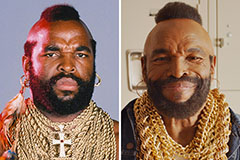Increased Reach, Same High Quality
Celebrated for its devotion to excellence, MyCigarsASAP.com delivers a refined selection of premium cigars from celebrated brands in the industry. With its growth into West Hollywood, the company keeps offering swift access to a diverse selection of luxury cigars, maintaining the same high standards of quality control that have made it a trusted name among cigar enthusiasts.
Cigar Delivery West Hollywood
CALL (800) 654-7959
Cigar lovers in West Hollywood can select from famous brands including: • Arturo Fuente – Offering a diverse range of expertly crafted cigars. • Montecristo – Esteemed for its velvety, equilibrated fusions that suit varied tastes. • Cohiba – Known worldwide for providing a flavorful, strong smoking experience. • Davidoff – A sign of class, delivering cigars of unsurpassed coherence and caliber. • My Father's Cigars – Providing bold, profound tastes that take cues from Cuban cigar heritage. • Ashton – Renowned for its refined, elegant flavor, manufactured from the finest Dominican-sourced tobaccos. • Padron – Renowned for its hearty tastes and superb craftsmanship, including the sought-after 1964 Anniversary Series. • Romeo y Julieta – A traditional favorite known for its even tastes and stable quality.
This extensive range certifies that MyCigarsASAP.com accommodates various tastes, with cigars supplied by celebrated regions such as Nicaragua, the Dominican Republic, and Honduras.
Emphasis on Freshness and Quality
Superiority is at the foundation of MyCigarsASAP.com’s endeavors. To make certain every cigar arrives in ideal condition, the company implements meticulous quality control practices, including climate-controlled storage and carefully selected inventory. Every order is handled with care, certifying that the cigars are brought fresh and rich in flavor. Also, their team of cigar experts is ready to supply personal advice, making each customer’s experience both personalized and informative.
Rapid and Efficient Delivery to West Hollywood
With this recent service growth, MyCigarsASAP.com solidifies its position as one of the fastest premium cigar delivery services in the region. Whether for a surprise party, a organized gathering, or a easygoing evening, locals in West Hollywood can now enjoy quick cigar deliveries within 30 to 60 minutes of ordering. This prompt service introduces a increased comfort to West Hollywood’s cigar patrons.
Cigar Delivery West Hollywood
CALL (800) 654-7959
About MyCigarsASAP.com
MyCigarsASAP.com is a Los Angeles-located cigar delivery service determined to offer swift, reliable access to a top-notch variety of cigars. With a focus on quality, freshness, and personalized service, the company has built a reputation as a reliable source for cigar enthusiasts throughout the area. Now, with increased service to West Hollywood, MyCigarsASAP.com keeps at the forefront of delivering high-end cigars swiftly and precisely.
For more intel or to request an order for swift delivery, call (800) 654-7959.
Cigar Beginnings and Background: A Voyage Through Time
Cigars, often aligned with opulence, convention, and craftsmanship, hold a abundant past going back eras. The progression of cigars illustrates the intersection of societies, navigation, and commercial exchange. This composition studies the fascinating beginnings and background of cigars, mapping their progression from tribal customs in the Americas to becoming a global icon of elegance.
The Early Origins: Cigars in Pre-Columbian Cultures Cigars have their initial roots in the indigenous cultures of the Americas. Ancient nations, including the Mayans, Aztecs, and Taínos, are understood to have used coiled tobacco blades. Excavation evidence show depictions of Mayans puffing on terracotta objects from to at least the 10th century. The label “cigar” presumably derives from the Mayan term “sikar,” which indicates to smoke.
In these old societies, tobacco was not only a leisure product but also held divine significance. Healers and tribal leaders inhaled tobacco during holy traditions, believing it allowed them to liaise with the other world. Tobacco was also used therapeutically, offering soothing for various sicknesses, such as cephalalgias and gastrointestinal issues.
Tobacco’s Introduction to Europe: Columbus and the New World The European legacy of cigars began with Christopher Columbus’s discovery in the Americas in 1492. His crew encountered original people smoking wraps of dehydrated tobacco foliage, an new practice that intrigued them. Columbus and his men carried bits back to Spain, marking the start of Europe’s affiliation with tobacco.
The practice of puffing quickly disseminated across Europe. Spaniards accepted it first, and by the 16th century, tobacco use was popular among European elites. Early cigars were crude against modern versions, but their appeal extended to Italy, Portugal, and France. Tobacco was also viewed as a panacea, held to treat a host of disorders from infections to fatigue.
Cuban Influence: Birthplace of the Modern Cigar Cuba’s part in cigar legacy is critical, converting tobacco from a area-specific commodity into a planetary phenomenon. In the 17th century, Cuba was the epicenter of cigar production due to its ideal climate and fertile soil, particularly in the Vuelta Abajo region. Cuban cigars quickly earned a reputation for unmatched quality and craftsmanship.
By the 1800s, the Cuban cigar industry was flourishing, and the term “Havana cigar” became synonymous with excellence. Skilled artisans, known as torcedores, assembled cigars by hand, polishing techniques that stay largely unchanged today. Many of the world’s most renowned cigar brands, such as Montecristo, Cohiba, and Romeo y Julieta, owe their roots to this era.
The Expansion to North America and Europe The craving for cigar s extended beyond Cuba’s borders by the 18th and 19th centuries. Tobacco plantations launched developing in other Caribbean islands, such as the Dominican Republic and Jamaica, as well as parts of Central America, including Honduras and Nicaragua. These regions are still cigar powerhouses today, each injecting special characteristics to their products.
In Europe, Spain and the Netherlands emerged as leading consumers and producers of cigars. The Dutch initiated a vigorous cigar industry, importing Cuban tobacco and combining it with local leaves to generate individual styles. Meanwhile, cigar consumption in the United States emerged as affiliated with status and masculinity. The rise of industrialization saw cigar factories increase across the U.S., particularly in Florida, where Cuban immigrants transferred their workmanship and traditions.
Cigars and Social Status: From Aristocracy to the Everyday Man Throughout history, cigars have been closely aligned to status, wealth, and celebration. By the 19th century, cigars were a mainstay among European and American aristocrats. Monarchs such as King Edward VII of England were well-known cigar fans, further enhancing their popularity among the elite.
In the United States, cigars became associated to political power and business success. Industrial magnates like Andrew Carnegie and John D. Rockefeller were often portrayed smoking cigars, establishing their image as icons of wealth. Prominent figures such as Winston Churchill famously endorsed cigars, contributing to their prestige.
However, cigars were not sole to the upper class. The growth of the cigar industry led to the production of economical options, making cigars accessible to the working class. Cigar clubs and lounges developed, offering environments where people from all walks of life could savor a smoke.
The Cuban Embargo and the Rise of New Markets The Cuban cigar industry met a major shift in 1962 when the U.S. government, under President John F. Kennedy, instituted a trade embargo on Cuba. Cuban cigars, previously a regular among American cigar connoisseurs, became illegal in the U.S., creating both lack and enigma around them. As a result, many Cuban cigar makers escaped to neighboring countries like the Dominican Republic, Nicaragua, and Honduras, where they continued their work using Cuban-seed tobacco.
This geopolitical transformation unlocked new markets and led to the rise of premium cigars outside Cuba. Today, cigars from these regions are esteemed for their quality, equaling Cuban cigars in flavor, construction, and diversity.
Cigars in Popular Culture and Cinema Cigars have cemented their place in popular culture, often representing power, victory, dig this and sophistication. Hollywood accepted the cigar as Source an icon, featuring it prominently in films. Characters like Tony Montana in Scarface and Winston Churchill in The Darkest Hour perpetuate the tie between cigars and authority.
Moreover, cigars are a essential at celebrations, marking occasions such as weddings, business deals, and the birth of children. Cigar lounges and clubs continue to serve as gathering spots for socializing and networking, solidifying their cultural relevance.
The Modern Cigar Renaissance The late 20th and early 21st centuries have observed a renewal of cigar culture. The 1990s “Cigar Boom” in the U.S. saw a reawakened interest in premium cigars, with new enthusiasts joining the scene. Artisanry, diversity in blends, and unique techniques have stimulated the modern cigar renaissance.
Custom cigar brands have obtained popularity, offering unique blends that attract to a expanding demographic of younger smokers. Additionally, the rise of cigar lounges and online cigar shops has made it more accessible for consumers to discover different varieties from around the world. Events like Cigar Aficionado’s Big Smoke further exhibit the long-standing draw of cigars in contemporary culture.
Cigars and Sustainability: The Future of the Industry As the cigar industry changes, sustainability has become a key issue. Environmental factors, including climate change and deforestation, influence tobacco cultivation. Many cigar manufacturers are utilizing eco-friendly practices by using sustainable farming methods and advocating reforestation efforts.
Fair labor practices are also gaining traction, with companies securing fair wages and safe working conditions for the farmers and artisans involved in cigar production. The emphasis on sustainability attempts to safeguard the industry’s legacy while fulfilling the expectations of socially conscious consumers.
Conclusion: A Legacy of Tradition and Craftsmanship From the venerated traditions of indigenous tribes to the extravagant lounges of today, cigars have moved a long and renowned path. Each drag of a premium cigar embodies with it the legacy of generations of craftsmanship, tradition, and cultural significance. Whether partaken by royalty, industrial tycoons, or modern-day lovers, cigars continue to represent more than just tobacco—they include a lifestyle, a celebration, and a connection to history.
As the world of cigars progresses, one thing remains constant: the charm of sitting back, lighting up, and delighting in the artful combination of tradition and innovation cloaked in each leaf.
The Cigar Making System: A Expedition from Past to Today
The Cigar Manufacturing Process: A Journey from Past to Present
Introduction
This cigar, a single timeless symbol of luxury and cultivation, has a rich history that traverses centuries and continents. From its early origins among local peoples to its modern incarnation as the global industry, the process of crafting a cigar is a blend of skill, inquiry, and tradition. This article delves into the intricate journey of cigar manufacturing, assessing the methods of the past with those of today, and highlighting how innovation and heritage blend in this absorbing craft.
I. Historical Overview of Cigar Manufacturing
A. Early Origins of Cigars
The history of cigars traces back to the indigenous peoples of the Caribbean and Mesoamerica, who grew tobacco and used it in religious and medicinal practices. When Christopher Columbus arrived in the New World in 1492, he and his crew noticed the native Taíno people of Cuba and Hispaniola forming and smoking dried tobacco leaves. This practice amazed the Europeans, who carried tobacco back to the Old World, where it quickly acquired popularity.
B. Traditional Cigar-Making Techniques
1. Tobacco Cultivation
In the early days, tobacco cultivation was one manual and labor-intensive process. Farmers used natural cycles and traditional knowledge to grow tobacco plants. The seeds were cultivated by hand, and the plants called for meticulous care to thrive.
2. Leaf Selection and Fermentation
After harvesting, the tobacco leaves were subjected to a natural air-curing process. They were mounted in curing barns to dry slowly, facilitating the chlorophyll to break down and the leaves to obtain their characteristic brown color. Fermentation was next, where the leaves were layered in piles called pilones. The natural heat generated by microbial activity diminished harshness and enhanced the rich flavors.
3. Rolling Methods
Cigar rolling was a craft transferred through generations. Skilled artisans, known as torcedores, constructed cigars entirely by hand. They picked out filler leaves, fastened them with a binder leaf, and enveloped the bunch with a high-quality wrapper leaf. This meticulous process required precision and an eye for quality.
C. The Role of Cuban Cigar Tradition
Cuba became linked with premium cigars due to its ideal climate and soil conditions, particularly in the Vuelta Abajo region. The country's cigar-making techniques created the standard for quality and craftsmanship. Cuban cigars were eagerly pursued, and the methods developed there affected cigar production worldwide.
II. Modern Cigar Manufacturing Process
A. Advances in Tobacco Cultivation
1. Genetic Selection
Modern agriculture has implemented genetic selection to augment tobacco plant qualities. Scientists and farmers collaborate to develop tobacco strains resistant to diseases and pests, and with desired flavor profiles. This generates more consistent and high-quality crops.
2. Modern Farming Techniques
Today, tobacco farming utilizes advanced irrigation systems, soil management, and crop rotation to maximize yield and quality. Precision agriculture technologies, such as GPS mapping and drones, assist monitor plant health and optimize resource use.
B. Leaf Processing Today
1. Fermentation Methods
While the fundamental principles of fermentation last, modern facilities oversee temperature and humidity with greater precision. This control secures uniformity and refines flavor development. Some producers employ multiple fermentation cycles to refine the tobacco further.
2. Aging and Storage
Post-fermentation aging has grown into a critical step. Tobacco leaves are aged in controlled environments, sometimes for several years, to mellow the tobacco and enhance complexity. Aging rooms are equipped with technology to keep ideal conditions.
C. Contemporary Cigar Rolling
1. Machine-Made vs. Hand-Rolled Cigars
The 20th century brought in mechanization to cigar production. Machine-made cigars adopt homogenized tobacco leaf (HTL) binders and wrappers, enabling mass production at lower costs. However, premium cigars endure to be hand-rolled, maintaining the artisanal tradition.
2. Quality Control
Modern factories enforce strict quality control measures. This includes regular inspections, draw testing to ensure proper airflow, and sensory evaluations. Technology helps but does not override the expertise of seasoned inspectors.
D. Innovations in Packaging and Distribution
Advancements in packaging materials guard cigars from environmental factors during shipping. Vacuum-sealed packaging, humidification devices, and sophisticated distribution logistics provide cigars reach consumers in optimal condition.
III. Comparing Past and Present Methods
A. Technological Advances
Technology has streamlined many aspects of cigar manufacturing without undermining the importance of skilled labor. Mechanization executes repetitive tasks, while artisans concentrate on quality and craftsmanship.
B. Maintaining Tradition in a Modern Industry
Despite technological progress, the essence of cigar-making persists rooted in tradition. Many producers prioritize hand-rolled methods and click to read more traditional fermentation to preserve authenticity and meet the needs of aficionados who treasure heritage.
C. Challenges and Opportunities
The industry confronts challenges like regulatory changes, health concerns, and market fluctuations. However, opportunities emerge from expanding global markets, premiumization trends, and consumer interest in artisanal products.
IV. The Art of Cigar Making: Preserving Craftsmanship
A. The Role of the Torcedor (Cigar Roller)
Torcedores are revered figures in cigar factories. Their expertise defines the cigar's construction and performance. Training to become a master roller can take years, indicating the complexity of the craft.
B. Apprenticeship and Skills Transfer
Many factories administer apprenticeship programs to impart skills to new generations. This guarantees the survival of traditional techniques and upholds high standards in production.
C. Cultural Significance
Cigar-making is more than a business; it's a cultural heritage in regions like Cuba, the Dominican Republic, and Nicaragua. Festivals, museums, and tours honor this legacy, inviting enthusiasts worldwide.
The cigar manufacturing process is a captivating blend of time-honored traditions and modern innovations. While technology has brought in efficiencies and consistency, the heart of cigar-making is found in the hands of skilled artisans who maintain a legacy that covers centuries. Appreciating this journey amplifies the appreciation of cigars, not just as products but as symbols of cultural heritage and craftsmanship.
 Mr. T Then & Now!
Mr. T Then & Now! Tahj Mowry Then & Now!
Tahj Mowry Then & Now! Sydney Simpson Then & Now!
Sydney Simpson Then & Now! Tonya Harding Then & Now!
Tonya Harding Then & Now! The Olsen Twins Then & Now!
The Olsen Twins Then & Now!